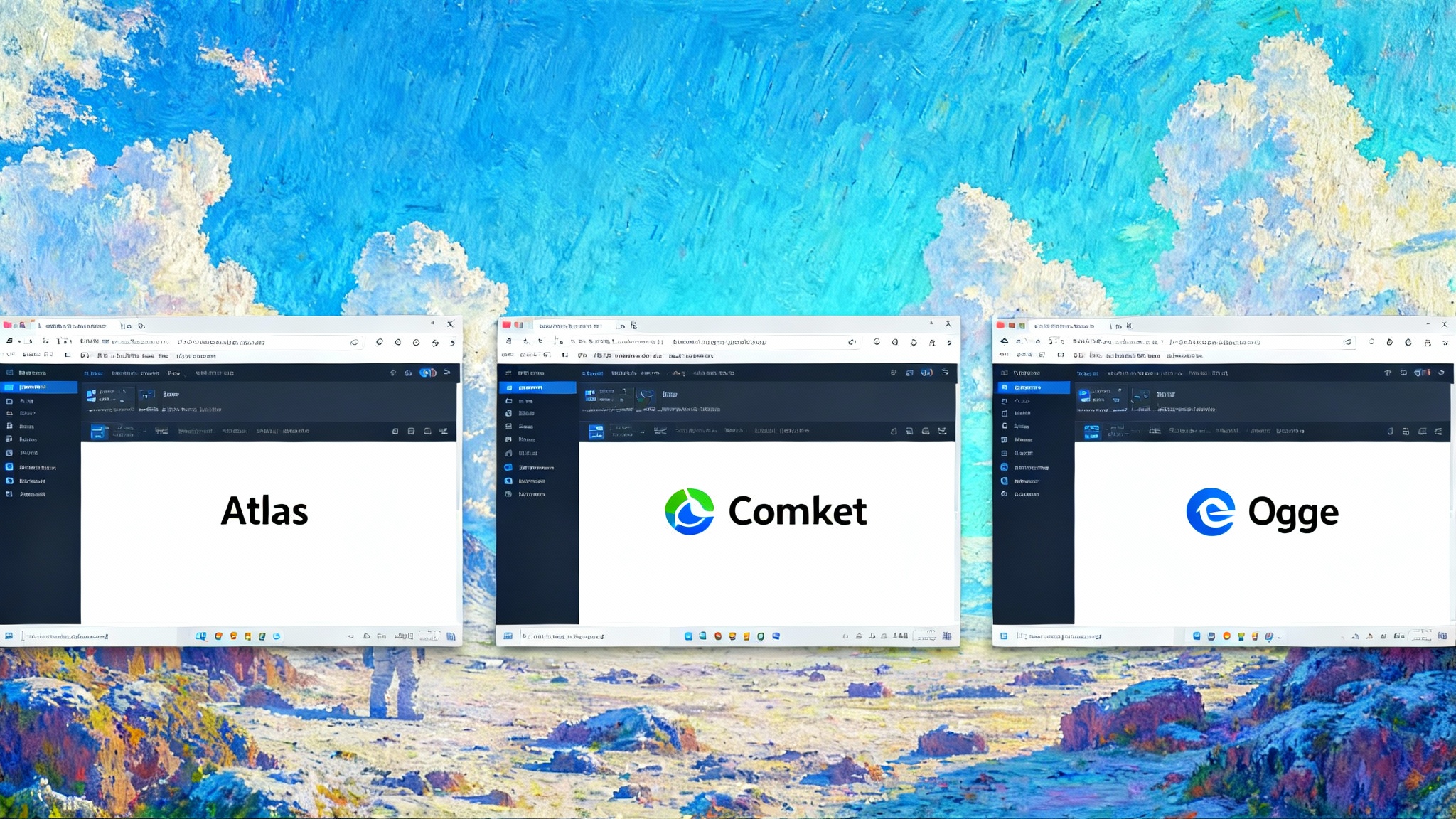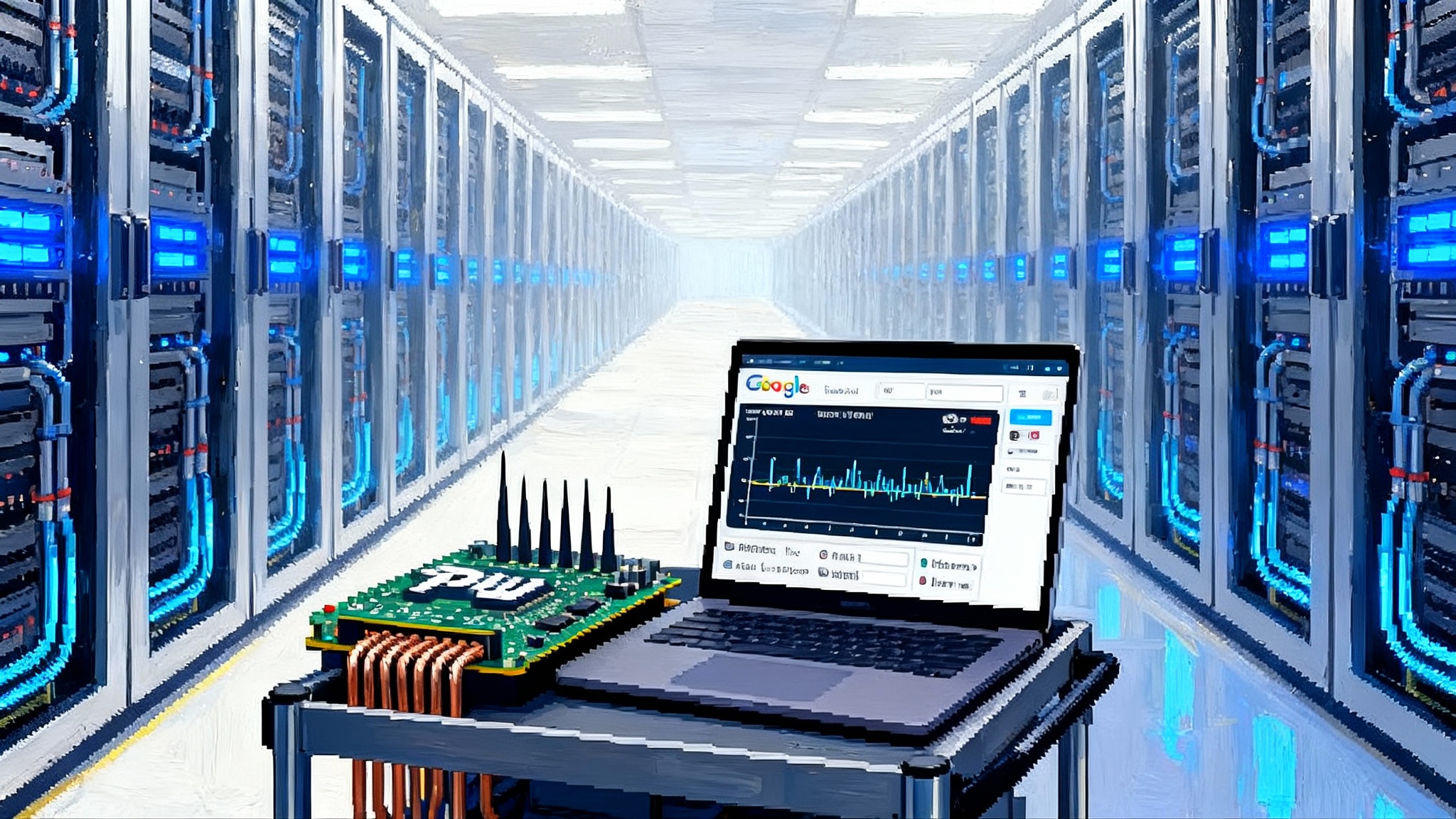The Browser Becomes the Agent Runtime: Atlas, Comet, Edge
October 2025 marked a strategic shift. The browser is no longer just a window to the web; it is the primary surface and sandbox for AI agents. Here is what changes next and how to build for it.

A quiet platform shift just got loud
In October 2025 three announcements landed within days of each other and made the same point from different angles. OpenAI introduced the ChatGPT Atlas browser. Perplexity made its Comet browser free to everyone, positioning it as a personal assistant that travels the web with you. Microsoft rolled out Copilot Mode with Actions in Edge as a limited preview, allowing Copilot to operate inside your tabs.
Each company used different language. Atlas talked about agent mode. Comet talked about a sidecar assistant and background tasks. Edge talked about Actions that read and act within a page. Under the vocabulary is the same architectural shift. The browser is becoming the default agent runtime. Instead of sending a prompt to a distant model and pasting results into a site, you invite an agent into the exact place where your data, identity, and daily work already live.
Think of your browser as a kitchen. For years, artificial intelligence has been a takeout app. Now the chef is moving into the kitchen, using your pots, your spices, and your grocery list. That move changes the menu, the speed of service, and the safety rules.
From default search to default agent
The past decade was defined by the fight to be the default search box. In 2025 the fight moved up a layer. The goal is to be the default agent, the entity that plans and performs computer tasks with you and sometimes for you. Search becomes one tactic among many. The new prize is the workflow.
Here is what the change looks like in practice.
- In Atlas, a travel plan is not a chat transcript. It is a set of tabs opened with your permission, an itinerary composed from your calendar, and a checkout flow that the agent can stage for your approval.
- In Comet, research is not a long summary. It is a sidecar that reads the actual pages you are viewing, highlights what matters, files snippets into a project space, and can run separate background tasks that make progress while you keep browsing.
- In Edge, Actions let Copilot reorganize a cluttered page, compare items across tabs, and fill forms, all while keeping a live link to your current session.
In each case the agent’s competence is not only model quality. It is access. The agent sees your tabs, cookies, and local state, so it can act with the same capabilities you have. That is the difference between answering “Which of these flights is refundable?” and actually placing the refundable fare in your cart so you can check out.
The new trust contract: privacy, memory, and on-device context
Giving any agent access to your browser’s context changes the risk surface. It also unlocks benefits that are hard to get any other way. The tradeoffs are becoming clearer, and October’s launches offer a preview of how vendors will frame them.
- Granular consent becomes the norm. Atlas surfaces agent mode as a feature you turn on when you want it. Edge’s Actions preview prompts for confirmation before high‑risk steps like sending an email or booking an item, and it uses allowlists and blocklists to constrain what the agent can touch. Microsoft’s public documentation spells out that Actions do not work on every site and that sensitive flows trigger supervision.
- On-device context improves results. An agent that can see open tabs, cookies, and the current document produces answers grounded in your real task, not a generic guess. That context also reduces copy‑paste gymnastics and brittle prompt engineering.
- Memory is power, memory is liability. Each of these browsers now ships memory controls that affect accuracy and safety. You will see toggles for whether the assistant can remember details between sessions, and where those details live. The practical guidance for teams is simple. Treat memory like credentials. Start with the smallest scope that unlocks a clear benefit. Document what the agent is allowed to remember, how long it keeps that memory, and how a user can revoke it.
For a deeper framework on safety and trust, see the agent trust stack.
A helpful mental model is a home renovation. Enabling agent mode is not handing over your keys forever. It is letting a licensed contractor in for a defined job, with cameras on, while you keep the right to stop work, change scope, or lock the door.
Automation grows up: from chats to controlled actions
Early assistants felt like productive chat windows. The October releases shift the emphasis to controlled action. The important word is controlled.
- Atlas positions agent mode as a way to open tabs, click, and complete tasks with your permission. The value is not eloquent prose. It is reliable progress. You ask for a three‑stop itinerary, the agent opens three airline sites you already use, applies your loyalty settings, and assembles the options in a single comparison view.
- Comet highlights background assistants for heavy lifting. You might assign one assistant to reconcile invoices in a vendor portal and another to summarize a regulatory filing in your research folder, each running while you carry on with other work.
- Edge Actions focus on the ergonomics of the browser itself. You can say clear my cache, reorganize my tabs into a trip plan, or rewrite this selection into a polite email. The system recognizes the boundary between the browser and the sites it hosts and treats your confirmations as part of the control plane. For reference, see Copilot Actions in Edge preview, including confirmation prompts, allowlists, and data access limits.
Two implementation patterns are converging.
- Event gating. Instead of unconstrained autonomy, the agent requests specific capabilities and the browser mediates them. Open a tab, read selection, fill form, click button. Each is a permissioned event, logged and reversible.
- Replay and audit. As agents become a daily tool, teams will ask for a way to replay what happened. Think of a searchable action log that shows the sequence of requested capabilities and the exact elements the agent touched. Expect this to become table stakes for enterprise deployments in 2026.
Tool access becomes a platform decision
The new contest is not only about which model you run. It is about which tools your agent can use and how discoverable those tools are inside the browser.
- Connectors and credentials. Comet leans into app connectors for calendar, email, and project management. Atlas signals developer momentum around an Apps software development kit inside the browser environment, with a goal of surfacing apps where the user already works. Edge has a natural route through the Microsoft 365 stack and Windows.
- Commerce and checkout. Once an agent can stage carts and fill forms, payments become part of the runtime. Expect competition to move into the mechanics of trusted checkout, refund handling, and fraud controls that are agent‑aware.
- Identity and role separation. The browser already knows which profile you are in. Agent runtimes will use that signal. A user may delegate a low‑risk research task to a personal profile with wide browsing access, and reserve high‑risk actions like contract signature for a hardened work profile with strict allowlists and an administrator‑managed log.
Standards will matter. See how MCP is becoming the USB-C of agents for a glimpse of interoperable tooling.
The practical takeaway for builders is to plan for a world where agents invoke web tools the way mobile apps invoke operating system intents. You will define capabilities, request scopes, and receive signed results that can be audited.
The emerging ecosystem play: extensions for agents
Every browser era exports a new ecosystem. The 2008 era had ad blockers and password managers. The 2014 era had developer and shopping extensions. The agent era will have capability packs that declare the actions an assistant can take on a site, along with descriptions and testable contracts.
What changes for developers:
- You will publish capabilities, not only user interface. A flight search site might publish a manifest that declares find flights, hold fare, check refund policy, and generate invoice. The browser can use that manifest to guide the agent, which reduces brittle heuristics and makes the site safer to automate.
- You will ship simulation environments. Instead of guessing whether an agent can book a table safely, you will provide a sandbox that acts like your site without touching live data. The agent learns the flows, the user sees a dry run, and the browser enforces that live actions follow the same sequence.
- You will participate in discovery. As Atlas, Comet, and Edge surface agent‑ready capabilities in their sidebars and new tab pages, there will be a race for placement and default picks. That is the equivalent of search ranking for the agent era.
Strategic implications for incumbents and challengers
- Operating systems gain leverage. If the default browser is the default agent runtime, the operating system gains a new way to shape user journeys. This favors vendors with control of both the browser and the desktop or mobile shell.
- Search becomes a feature, not a destination. A useful agent will search, browse, and act without bouncing the user out to a separate site. That changes how publishers measure attribution and creates pressure for better licensing and clearer content usage terms.
- The metrics of success change. Sessions and page views give way to tasks started, tasks completed, and confirmations required. A team that can reduce confirmations without increasing risk will win share.
For the economics behind cheaper, more capable agents, see how open-weight reasoning takes over.
How to build for 2026: a roadmap for teams
You do not need to build a browser to compete. You need to target the new runtime. Here is a pragmatic roadmap.
1) Ship agentic browser application programming interfaces where it matters
- Start with a capability manifest. Define the top ten actions users perform on your site that are tedious or error prone. Write them down as capabilities with inputs, outputs, and preconditions. Be specific. Example for a travel site: search round‑trip, search multi‑city, hold fare, add bags, apply voucher, request refund.
- Create a non‑production sandbox. Provide a replica of your flows that accepts synthetic accounts and synthetic payments. Let agents practice with no risk. Record everything. If you cannot build a full simulator, start with a record and replay harness that can validate selectors, timing, and form structures.
- Adopt event gating. Expose each major step as a discrete, permissioned call rather than a black box sequence. That is easier to secure, easier to debug, and easier for browsers to mediate.
- Publish an allowlist and a denylist. Tell the agent what it can do without user confirmation, what it can do with confirmation, and what it must never do. Make these rules machine readable so browsers can enforce them.
2) Design vertical workflows that earn trust
Horizontal agents are impressive demos. Trust is won in verticals where results are unambiguous.
Pick one vertical where your product already has distribution. Examples:
- Finance operations. An agent that closes the books by pulling statements, reconciling line items, and drafting journal entries, with a human reviewing variances.
- Healthcare intake. An agent that pre‑populates forms from uploaded documents on patient consent, flags missing fields, and schedules follow‑ups without touching protected fields directly.
- Recruiting. An agent that tracks candidates across job boards, updates the applicant tracking system, and schedules interviews inside the constraints of company policy.
For each workflow, define four guardrails.
- Scope. Which sites, which data, which accounts.
- Confirmation policy. When to ask, when to notify, when to proceed silently.
- Audit trail. What to log and how long to keep it.
- Recovery plan. What happens if the agent stalls, encounters a captcha, or reaches a paywall.
Ship a guided version first. A guided workflow asks for more confirmations and shows a preview before every action. Once your metrics show reliability, reduce confirmations where risk is low.
3) Build distribution moats for the AI browser war
In 2026, distribution will come from three channels.
- Browser placement. Negotiate for your capability packs and vertical workflows to be discoverable in the agent sidebar, new tab page, or settings. Usage follows convenience.
- Owned audiences. Publish agent‑ready templates and starter projects that make your workflows the path of least resistance. A library of templates is a modern equivalent of search engine optimization, but for agents.
- Publisher and data partnerships. As agents summarize and act across content, the winners will license high‑value sources and surface them within the runtime where the action happens. Design compensation that aligns with agent behavior. If your workflow never requires a click, pay for the value you still derive.
Measure your moat with three numbers. Time to first successful task, tasks per user per week, and net confirmations per task. If those numbers are moving in the right direction, your agent surface is compounding.
What this means for teams today
- If you run a product with heavy web interactions, prototype your agent manifest now. Start with read‑only capabilities, then add write and purchase flows with strict confirmation rules.
- If you run security or compliance, create a playbook for agent runtime controls. Define which profiles can use which capabilities, who reviews logs, and how to handle a suspected prompt injection.
- If you are a developer platform, add agent‑ready scopes to your application programming interface. Build the simulator. Write the tests. Document the expected patterns for agents to be good citizens on your platform.
The conclusion: the web gets an operator
Browsers started as viewers. Then they became application platforms. In 2025 they started hiring operators. Atlas, Comet, and Edge are early versions of the same idea, that the important work on the internet is not pages but tasks, and that tasks complete faster when an agent can act where your identity, context, and tools already live.
The next year will be a race to make that operator trustworthy, predictable, and available in the places people already work. If you build for the browser as an agent runtime, you will meet users where their work actually happens. If you do not, your product will be summarized by someone else’s agent and purchased in someone else’s cart. The kitchen is open. It is time to cook.








